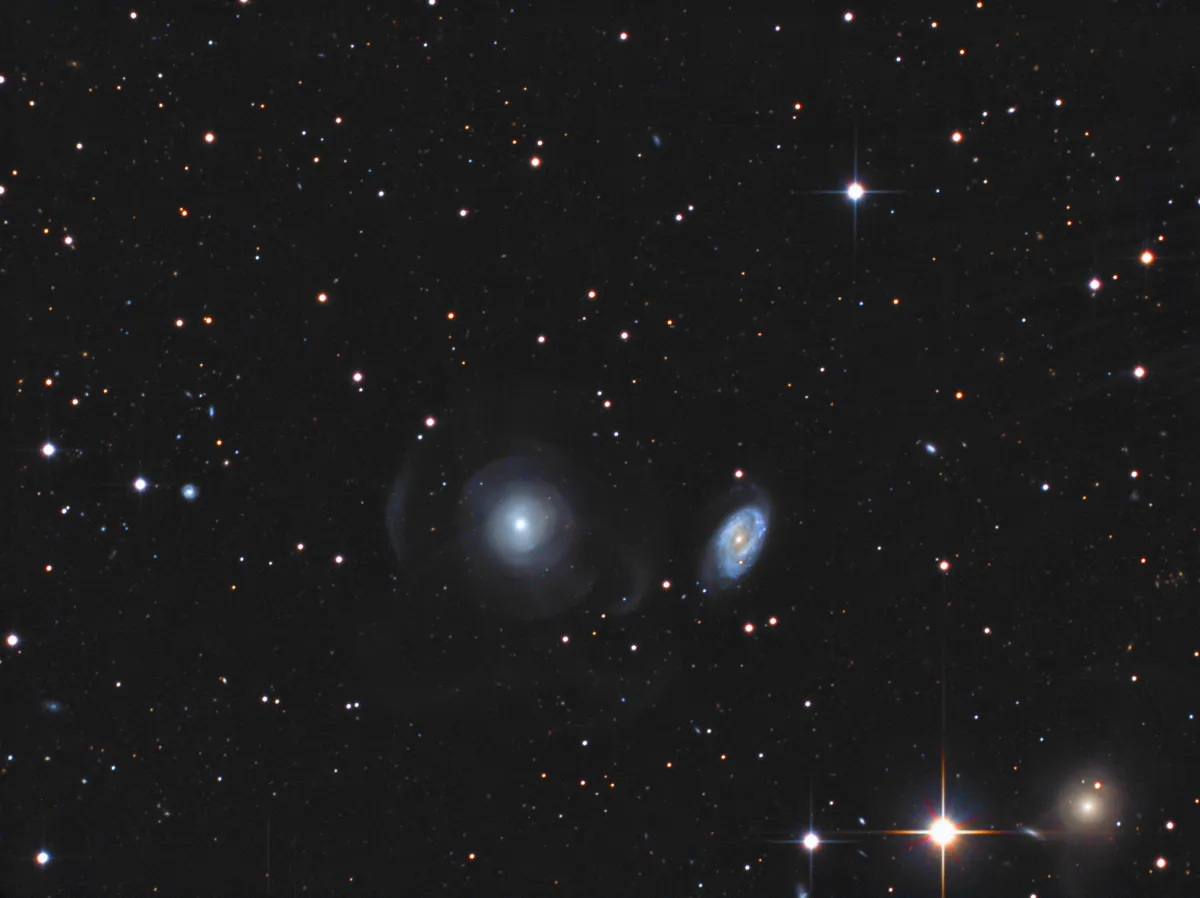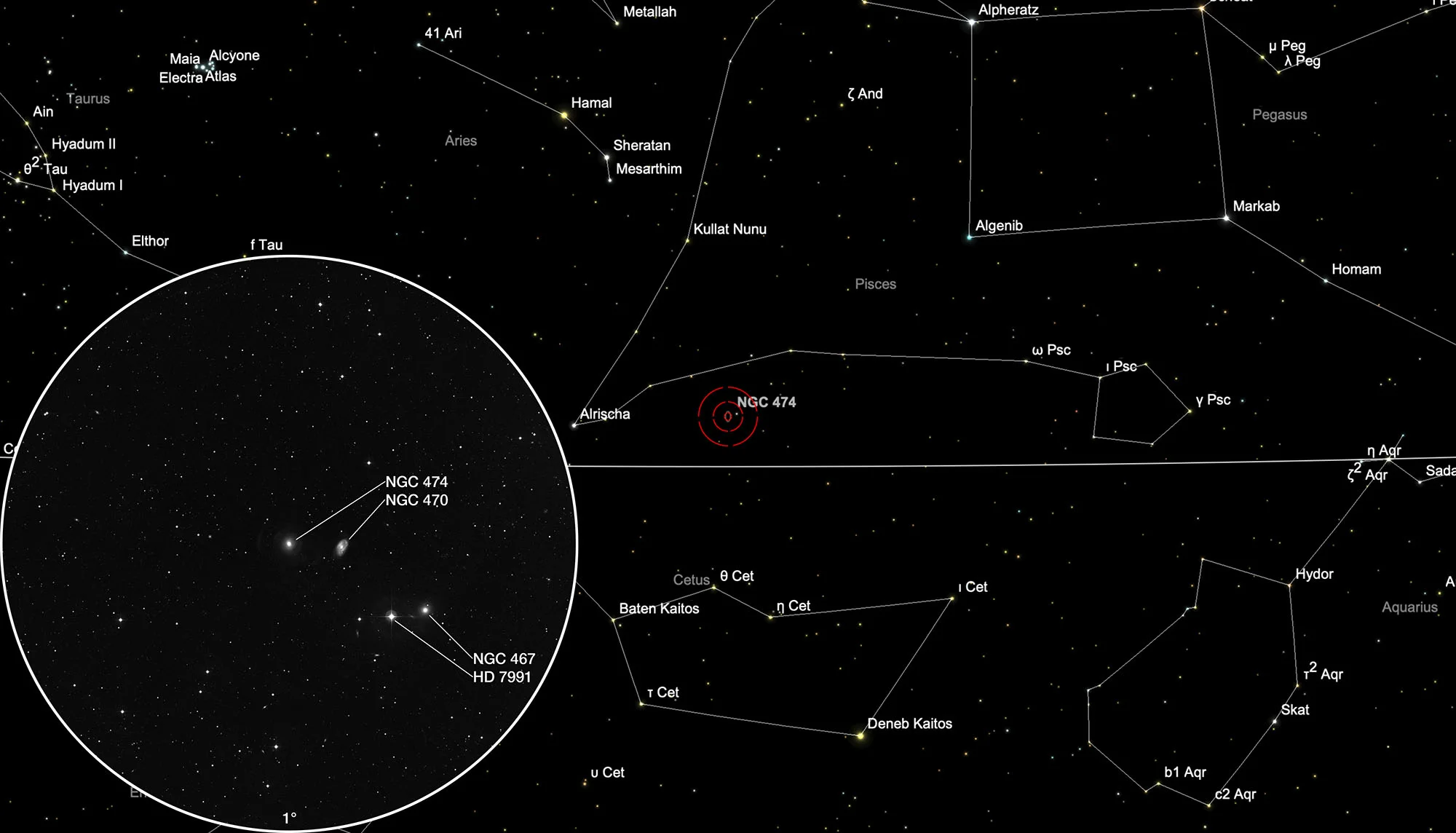Pair Galaxies NGC 470/4 (Arp 227)

History
The galaxies NGC 470 and NGC 474 were discovered on 13 December 1784 by the German-British astronomer William Herschel with his self-made 18.7 inch f/12.8 reflecting telescope in Slough, England. On October 8 of the following year, he came across NGC 467. [277] In Halton Arp's 1966 «Atlas of Peculiar Galaxies», the galaxy NGC 474 is listed with Arp 227 as an example of a galaxy with concentric rings. [199]
Physical Properties
The elliptical galaxy NGC 474 has a spectacular system of surrounding shells and tidal currents, which could be traced back to an earlier interaction or merging with another galaxy about two billion years ago. From the galaxy NGC 470, which is only 47 kpc away, cold gas is withdrawn in the outer areas. [446] Distances from NGC 470 and NGC 474 to Earth range from 27 Mpc to 41 Mpc. The galaxy NGC 457 is much further away at 73 Mpc to 78 Mpc. [145]
| Name | RA | Dec | Type | bMag | vMag | B-V | SB | Dim | PA | z | D(z) | MD | Dreyer Description | Identification, Remarks |
|---|---|---|---|---|---|---|---|---|---|---|---|---|---|---|
| NGC 467 | 01 19 10.1 | +03 18 05 | Gx (S0) | 12.9 | 11.8 | 1.1 | 12.8 | 1.7 × 1.7 | 0.018236 | 77.03 | pB, pL, R, gbM | WH I 108; h 99; GC 263; UGC 848; MCG 0-4-79; CGCG 385-65 | ||
| NGC 470 | 01 19 44.8 | +03 24 33 | Gx (Sb) | 12.5 | 11.8 | 0.7 | 13.3 | 2.9 × 1.7 | 155 | 0.007919 | 33.45 | 40.420 | pB, L, iR | WH III 250; GC 264; UGC 858; MCG 0-4-84; CGCG 385-70; Arp 227; IRAS 01171+0308 |
| NGC 474 | 01 20 06.7 | +03 24 58 | Gx (S0) | 12.4 | 11.5 | 0.9 | 15.5 | 7.1 × 6.3 | 75 | 0.007755 | 32.76 | 30.880 | pB, S, smbM, f of 2 | WH III 251; GC 269; UGC 864; MCG 0-4-85; CGCG 385-71; Arp 227 |
Finder Chart
The galaxy is located in the constellation Pisces. The best time to observe is June to March, when it is highest at night.
